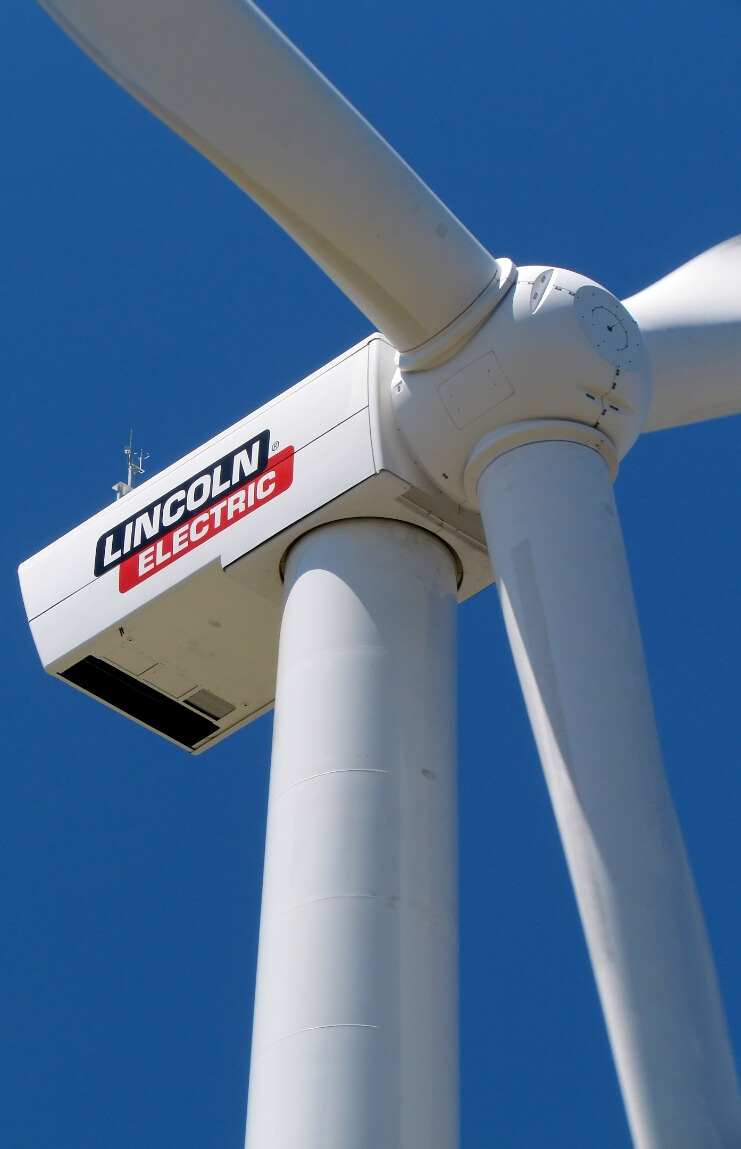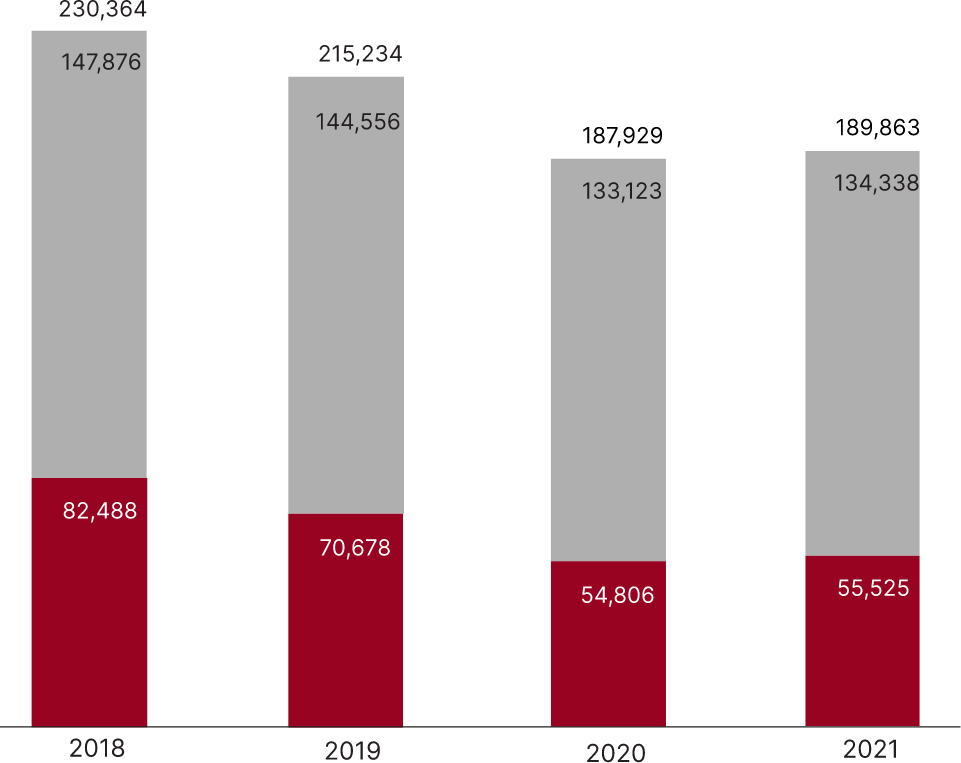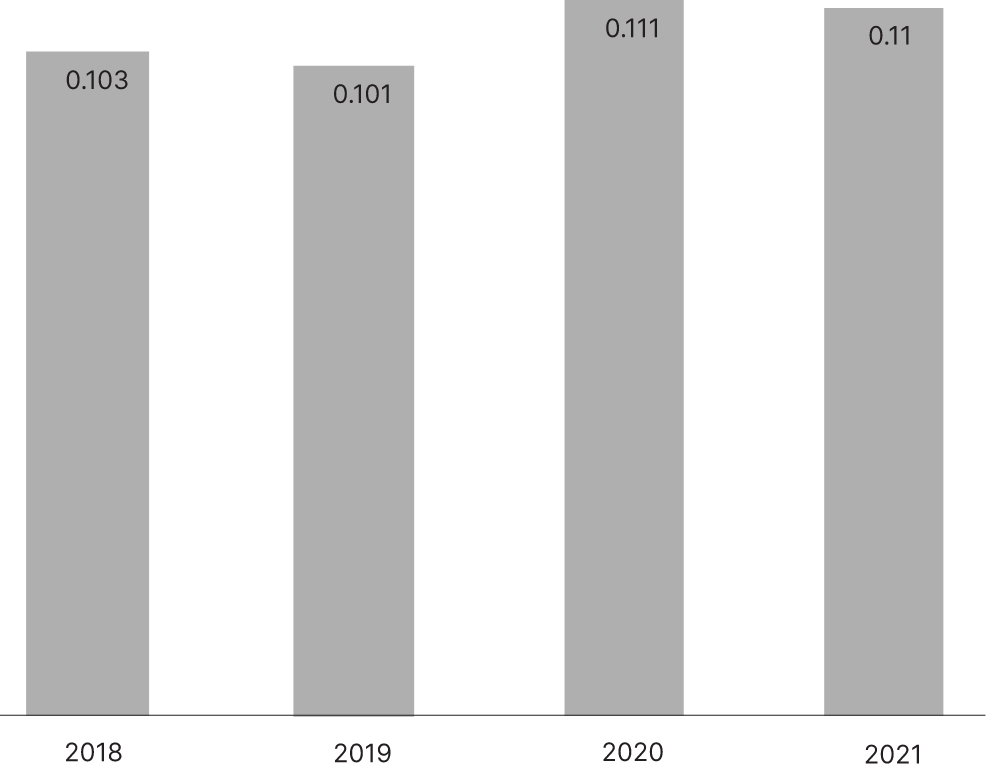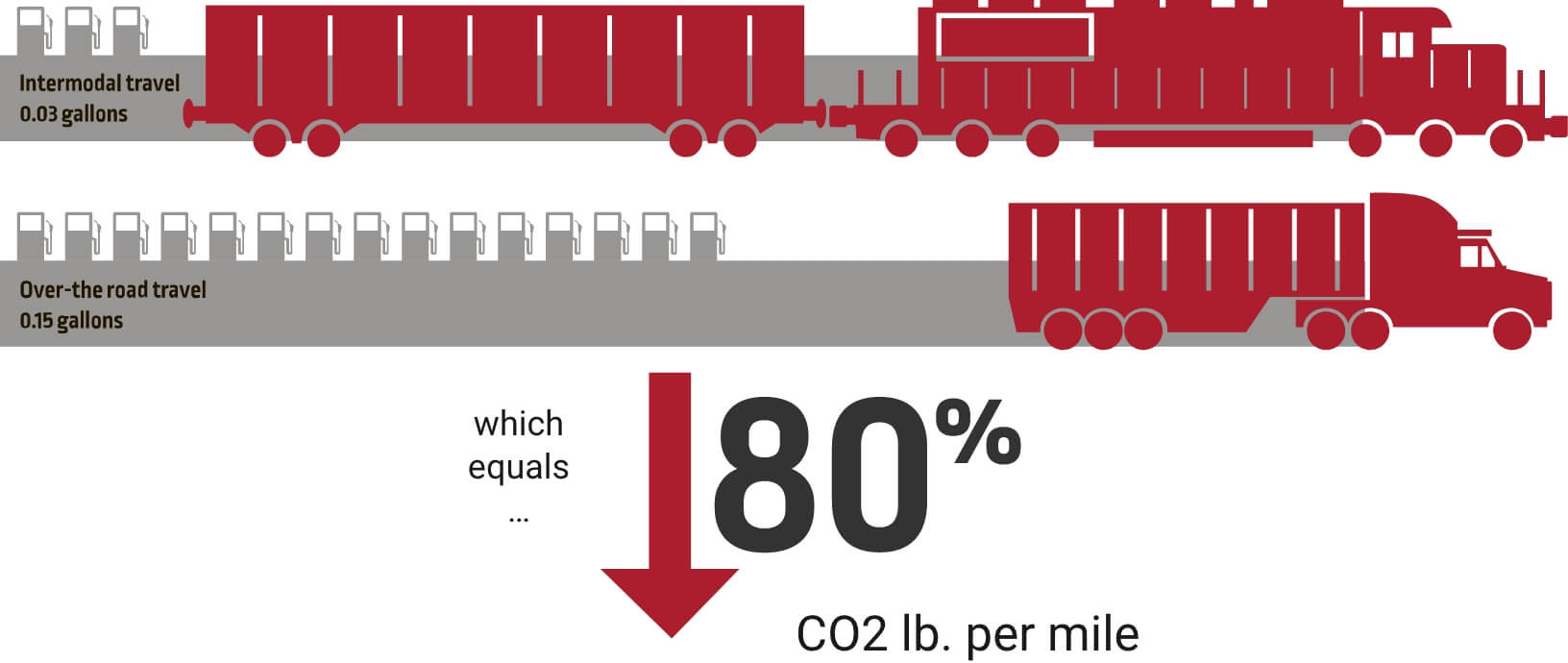GREENHOUSE GAS EMISSIONS & ENERGY INTENSITY
 Lincoln Electric ISO certifications can be found here.
Lincoln Electric ISO certifications can be found here.
We are committed to reducing our carbon footprint through the reduction of greenhouse gas (GHG) emissions. In 2021, we reduced absolute Scope 1 and 2 GHG emissions by 18% compared with our 2018 baseline. We achieved these reductions through continued investment in energy efficiency projects within our operations. To continue to drive these operational investments, we track energy intensity and GHG emissions reduction as key metrics. Energy intensity is the total amount of energy consumed per labor hour worked. We target reducing our energy intensity by 16% in 2025 (or 2.5% per year) compared with our 2018 baseline.
- Scope 1 GHG (direct) emissions constituted 29% (approximately 55,525 metric tons) of total GHG emissions in 2021 and increased 1.3% compared with the prior year due to production activity increase as a result of recovery from pandemic restrictions.
- Scope 2 GHG (indirect from purchased energy) emissions constituted the remaining 71% (approximately 134,338 metric tons) of total GHG emissions in 2021 and increased 1% compared with the prior year. We plan to increasingly source electricity from renewable sources such as wind, hydroelectric, and solar to reduce our Scope 2 emissions.
- Our energy intensity performance has been unfavorably impacted by a reduction in production hours related to operational consolidation and improved productivity. Absolute energy use declined 6% in 2021 versus to the 2018 baseline. When measured as function of revenue, energy intensity for the Company increased by 0.1% in 2021 compared to a 2018 baseline.
Renewable Energy
In 2011, we installed the largest known urban wind tower in North America capable of producing 2.5 megawatts of electrical energy, or approximately 10% of the Cleveland campus’ requirements. This installation represents the Company’s commitment to integrating renewable energy sources into its manufacturing processes. Even more importantly, it stands as a symbol of our commitment to the wind tower fabrication industry — showcasing the unique benefits our products and welding solutions offer to this prominent business segment.

Absolute Metric Tons CO2e of GHG
REDUCTION from 2018 baseline
REDUCTION total tons CO2e from
2018 baseline to 2021

Energy Intensity by Year
REDUCTION from 2018 baseline
INCREASE1 from 2018 baseline to 2021
Encouraging More Efficient Transportation
We recognize that an efficient product transportation model must be part of our broader environmentally conscious logistics strategy for a large company with a broad product offering and a geographically expansive customer base. As such, our Cleveland operation, the largest manufacturing operation in the Lincoln Electric family and our global headquarters, has transitioned domestic shipments to a more efficient intermodal transportation solution that combines rail and truck transportation and allows us to both optimize the movement of products from our northeast Ohio facility to regional service centers across the country and reduce greenhouse gas emissions in our value chain.
By using an intermodal solution and consolidating shipments, we are maximizing space utilization, reducing the number of shipments required, and reducing “empty miles.” The net results have been highly favorable. In 2019, the first year of using this approach, we reduced our shipping-related GHG emissions by 197 metric tons, or 57%, compared to equivalent freight volumes in 2016. This is the equivalent of planting 5,117 mature trees, removing 42 cars from the road, or eliminating the electricity consumption of 29 households.
FUEL CONSUMPTION PER MILE
average trip spanned 4,768 miles

Lighting Improvements in Cleveland Operations
Our plants in Northeast Ohio, the largest in the Lincoln family, use mixed forms of overhead lighting. The current outdated lamps require more energy and are less efficient than newer LED lamps. Over the next four years, we will spend approximately $3 million to upgrade our lighting, which will reduce our energy intensity by 3.75% and our GHG emissions by more than 3,700 metric tons CO2e. The new LEDs will last longer than traditional lamps, improve lighting throughout our facilities, and contribute to ISO 45001 and 14001 certifications.
Our plants in Northeast Ohio, the largest in the Lincoln family, use mixed forms of overhead lighting. The current outdated lamps require more energy and are less efficient than newer LED lamps. Over the next four years, we will spend approximately $3 million to upgrade our lighting, which will reduce our energy intensity by 3.75% and our GHG emissions by more than 3,700 metric tons CO2e. The new LEDs will last longer than traditional lamps, improve lighting throughout our facilities, and contribute to ISO 45001 and 14001 certifications.
Roof Coatings to Reduce Facility Energy Intensity
India’s excessive heat and humidity during summer months increases the risk of heat stress and the dependence on climate control systems. To mitigate rising indoor facility temperatures at Chennai, India, the facility roof was covered with a specially designed acrylic thermal resistivity roof coating. The coating reduced the roof temperature by 7 to 10 degrees Celsius during direct sunlight hours and reduced the facility temperature — lowering energy requirements from the climate control system.
Energy Metering
In Corsalone, Italy, energy meters were used to compare energy efficiency between similar production lines. The facility then optimized the configuration of the more energy-intensive line using the metered data. The changes resulted in an extension of the life of the tooling used on the line and an annual savings of approximately 180,000 kWh of electricity.
Heat Energy Recovery
In Bielawa, Poland, waste heat from a powder paint drying process is recovered and reused. A heat exchanger transfers heat from the 150°C air exiting the oven to the incoming water for the parts washer that prepares parts to be painted. Recovery of this waste heat, which was previously exhausted outside of the building, will result in an annual savings of 28,800 kWh of electricity.

